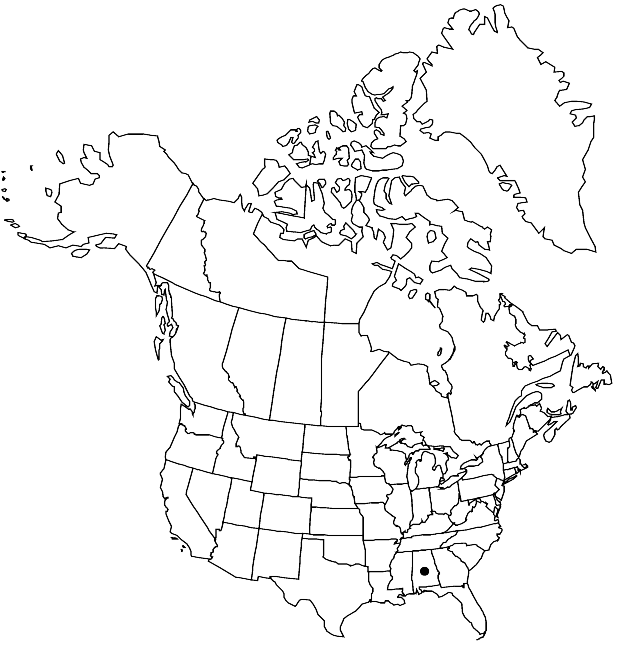Paysonia lyrata
Novon 12: 381. 2002.
Annuals; hirsute or glabrous, trichomes simple proximally, simple, with branched, smaller ones distally. Stems erect, outer decumbent at base, 1–3 dm. Basal leaves: blade 2–7 cm × 6–15 mm, margins lyrate, (terminal lobes relatively large, orbicular to elliptic), surfaces hirsute (trichomes simple, or mixed with branched, smaller ones). Cauline leaves: blade ovate to broadly oblong, 0.5–2 cm × 4–10 mm, base auriculate, clasping, margins nearly entire or coarsely dentate, (apex obtuse, surfaces densely to sparsely hirsute, trichomes simple, or simple and branched). Fruiting pedicels divaricate-ascending, straight, 10–15 mm, densely pubescent. Flowers: sepals (spreading, yellowish at anthesis), 3–4 × 1.2–1.5 mm, (outer pair slightly saccate basally), pubescent; petals yellow, 5–7 × 3.5–4 mm, (claw relatively short), apex slightly rounded, truncate, or shallowly retuse; filaments dilated basally, (glandular tissue subtending paired stamens, surrounding single stamens). Fruits sessile, subglobose, (often slightly depressed at base of style and slightly didymous), 3–4 × 3–4 mm; valves glabrous; replum orbicular or suborbicular, slightly broader than high; septum complete, (opaque); ovules 4–8 per ovary; style 1–1.5 mm, glabrous; stigma not expanded, nearly same diameter as style. Seeds oval to suborbicular, 1.5–2.5 mm. 2n = 16.
Phenology: Flowering Mar–Apr.
Habitat: Cedar glades, limestone hills, red soils, open pastures, disturbed soils of roadsides, bottom lands, old fields
Discussion
Of conservation concern.
Selected References
None.
